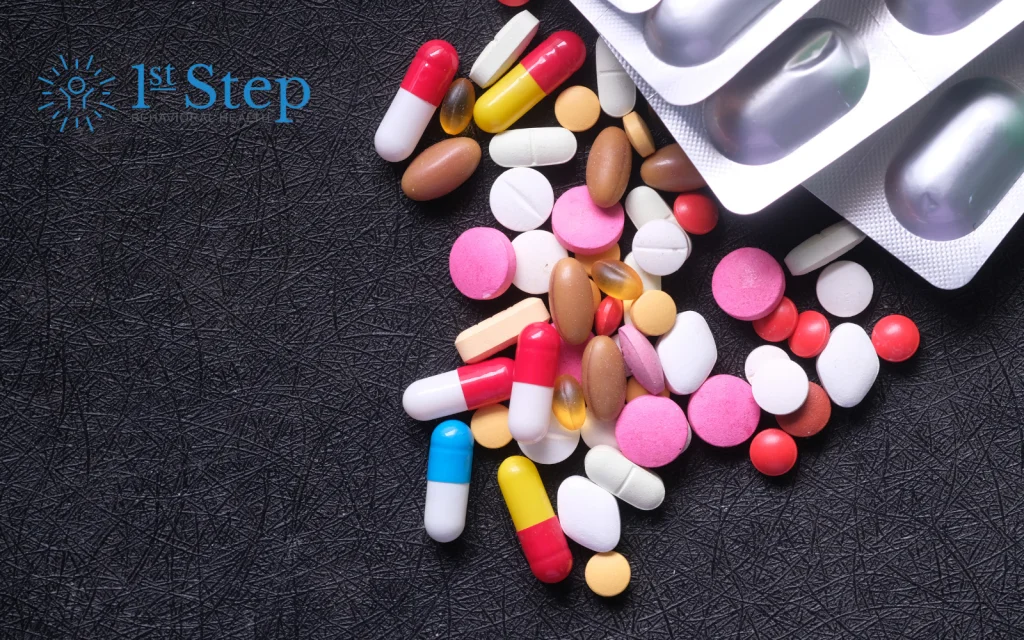Millions of people in the United States rely on prescription drugs to treat or manage the symptoms of a medical condition. While prescription drugs can be safe when people take them exactly as prescribed, many have the potential for misuse and addiction.
Prescription drug abuse can occur quickly or develop slowly over a long period. It is essential to understand the risks associated with your prescription medications and seek treatment as soon as possible.
Prescription drug addiction is a complex condition. People who become addicted to prescription medications require comprehensive substance use disorder (SUD) treatment and continuing support.
This article will explore prescription drug abuse, including some of the most addictive drugs. You will learn:
- How prescription medication addiction develops
- The three most addictive prescription drugs
- Where to find effective treatment for prescription drug abuse
Take the first step of your recovery journey by getting the treatment and support you need. Contact the specialists at First Step Behavioral Health to explore our holistic treatment programs or to schedule an intake assessment.
Prescription Drug Addiction: An Overview
While many people believe prescription drugs aren’t hazardous, many common prescription medications have the potential to be addictive or cause other dangerous side effects. Recent research shows about 18 million people over the age of 12 report misusing a prescription medication.[1]
Many prescription medications produce side effects people find pleasurable, including feelings of euphoria, increased energy, or relaxation. These desirable side effects may cause people to misuse their prescription drugs or to use them recreationally (without a prescription).
Prescription drug misuse includes:
- Taking a higher dose of a medication than prescribed
- Taking a drug more often than prescribed
- Taking a medication for a longer period than your doctor advised
- Ingesting a drug differently than directed, such as crushing pills and snorting them
People who abuse their prescription medications may develop symptoms of addiction, including:
- Tolerance
- Withdrawal symptoms
- Cravings
- Physical dependence
People who misuse prescription drugs have an increased risk of overdose and other serious, sometimes life-threatening complications.
What are the 3 Most Addictive Prescription Drugs?
Several common prescription medications have an increased risk of misuse and addiction. Doctors typically limit the length of time someone takes addictive prescriptions, but misuse remains common.
Here is an overview of the three most addictive prescription drugs.
Opioids
Opioids are pain relief drugs that can relieve moderate to severe pain. In the 1990s, the number of opioid painkiller prescriptions began to climb. Since then, the United States has experienced a prescription opioid abuse crisis that claims the lives of over 17,000 people each year (about 45 people each day).[2]
Common opioid pain relievers include:
- Codeine
- Hydrocodone
- Morphine
- Oxycodone (Vicodin, Percocet, OxyContin)
Opioids work by binding to receptors in the brain in areas related to emotional regulation, pain control, and pleasure.
Many people become addicted to opioids after taking them to manage pain. They may enjoy the way these potent drugs make them feel and begin to take more of them. In 2021, an estimated 5 million people had a prescription opioid use disorder.[3]
People who take opioids, even as directed, may become addicted to them. People without other risk factors for substance abuse or addiction may develop physical dependence in a short period.
Many people with opioid dependence turn to dangerous street drugs, such as heroin or fentanyl, when they can no longer obtain their prescription medications. They may take high doses of these drugs, which can be life-threatening.
Opioid abuse and addiction put people at risk for a lethal overdose and other severe complications. It is important to recognize the signs of opioid abuse and seek treatment as quickly as possible.
Central nervous system (CNS) depressants
Millions of people in the United States live with anxiety, panic disorders, and sleep disorders. Many take prescription depressants to treat anxiety and other conditions.
Some of these medications have the risk of misuse and addiction. Research from 2021 showed that nearly 4 million people abused benzodiazepines, and almost 5 million misused prescription sedatives.[3] Of these, over 2 million met the criteria for substance use disorder (SUD).
Prescription depressants reduce CNS activity and can reduce symptoms of anxiety. People may feel calm, sedated, or euphoric when taking them.
Common CNS depressants include:
- Benzodiazepines: Diazepam, Valium, Alprazolam, Xanax
- Barbiturates: Amytal, Luminal, Nembutal
People who take prescription depressants may abuse them. People may also use CNS depressants recreationally for their desirable effects.
Stimulants
People may take prescription stimulant drugs to manage symptoms of attention deficit hyperactivity disorder (ADHD) and other conditions.
Stimulants can increase CNS activity, which can treat attention deficit hyperactivity disorder. However, when people misuse these drugs, they may experience:
- Increased energy
- More focus
- Better attention
- More alertness
- Elevated heart rate
- High blood pressure
- Higher body temperature
Common prescription stimulants include:
- Amphetamine+Dextroamphetamine (Adderall)
- Lisdexamfetamine (Vyvanse)
- Methylphenidate (Concerta, Mehylin, Daytrana, Ritalin)
- Dextroamphetamine (ProCentra, Dextrostat, Dexedrine)
Research from 2021 shows that about 3.7 million people in the United States reported abusing prescription stimulants, and about 1.5 million had stimulant use disorder.[3]
Find Treatment for Prescription Drug Abuse
If you are one of the millions of people in the United States living with prescription drug addiction, you are not alone. Contact the First Step Behavioral Health specialists now to explore your prescription drug addiction treatment options.
Without treatment, an addiction will likely get worse. Long-term recovery begins when you get the treatment you need. Don’t wait another day to get help. Take the first step of your recovery journey by contacting us today.
References:
- National Institute on Drug Abuse (NIDA): Misuse of Prescription Drugs
- Centers for Disease Control and Prevention (CDC): Opioid Overdose
- National Institute on Drug Abuse (NIDA): What is the scope of prescription drug misuse in the United States?
Jump to a Section
Call (855) 425-4846
